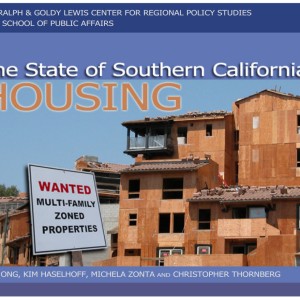
Authors: Paul M Ong, Kim Haselhoff, Michela Zonta , Christopher Thornberg
Date: January 1, 2004
Project: [wpv-post-link id=”$project”]
This report contains the findings from an analysis of Southern California’s housing sector, which has experienced an acute affordability crisis in recent years. High housing costs have kept homeownership rates low in comparison to the rest of the nation and created a heavy financial burden on both renters and owners. This report analyzes both the long-term housing trends in the region and the more recent short-term housing cycles, as well as the effect of housing prices on migration and the effect of public policy on housing. High housing costs are driven by high land costs, which are associated with the region’s enormous size and the high cost of commuting and transport within the region. Over the long term, high population growth, soaring home prices, and stagnant income growth have all contributed to the housing crunch. In the short term continued population growth, increasing personal income, and declining interest rates, combined with limited levels of housing production, have led to an extremely tight housing market and tremendous price appreciation. However various factors indicate that the current level of price appreciation is not sustainable in the long run. Migration data indicate that those who leave California are more likely to become homeowners, and many do move away for better housing opportunities. Despite the disadvantage in housing affordability, people continue to move to the region for the other advantages it offers. Finally, local barriers to housing development impact both the distribution of affordable housing and the overall supply of housing in the region. More effective policies are needed to help increase the supply of affordable housing and provide for a more balanced distribution of affordable housing throughout the region.
Link to Publication